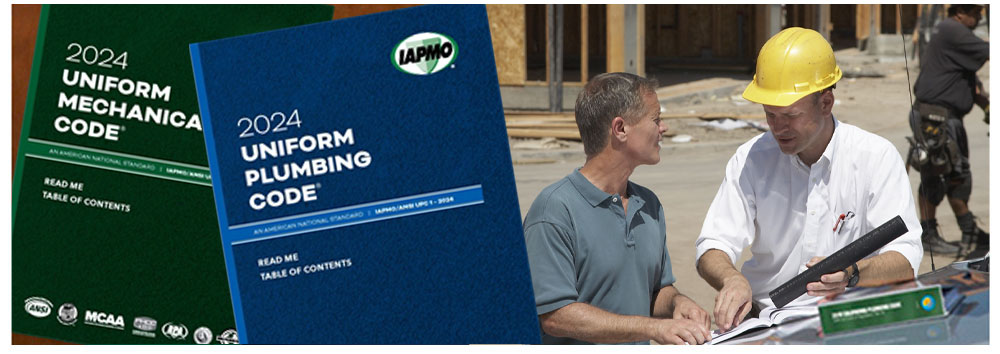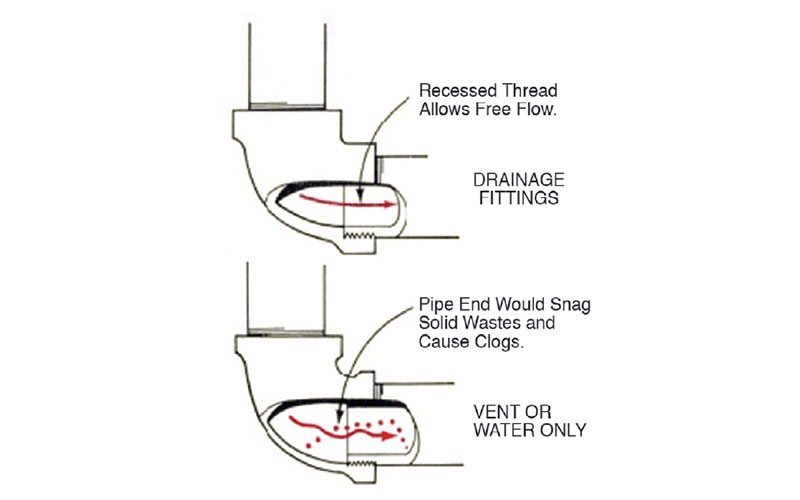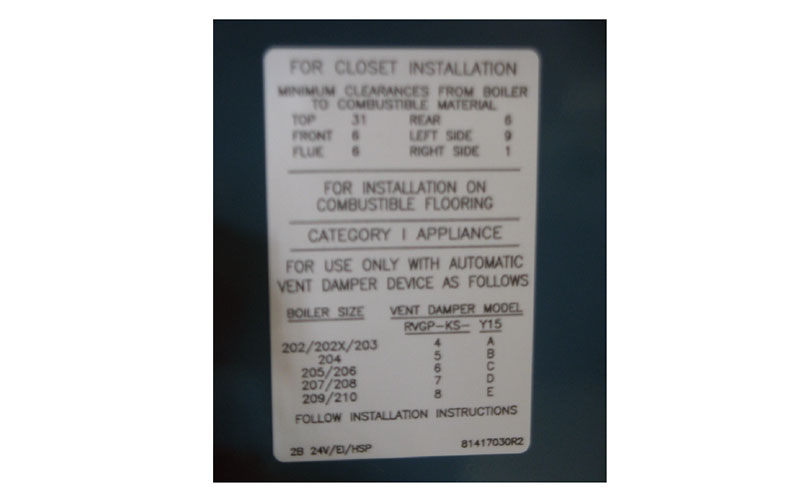September 5, 2024

From the 2024 UPC Illustrated Training Manual, Chapter 7 – SANITARY DRAINAGE
701.3.3 Type. Fittings used for drainage shall be of the drainage type, have a smooth interior water-way, and be constructed to allow 1/4 inch per foot (20.8 mm/m) grade.
The drainage system relies on gravity, not on any pressure system, to move the effluent through the system. In order for the waste to travel down the system the installation must be uniformly smooth without sharp turns or snags. To accomplish this, pipe and fittings are designed and manufactured with smooth bores and transitions between pipe and fittings to provide the best pathway of least resistance (see Figure 701.3.3). Solids are entrained in the effluent and must be transported to their destination without plugging the system. Research and design of pipe and fittings are accomplished for a reason; therefore, the system must be installed correctly or it will not accomplish its designated task. The pipe must be cut, deburred and joined with fittings correctly.

SCREWED DRAINAGE FITTINGS
From the 2024 UMC Illustrated Training Manual, Chapter 10 – BOILERS AND PRESSURE VESSELS
1010.0 Clearance for Access.
1010.1 General. Where boilers are installed or replaced, clearance shall be provided to allow access for inspection, maintenance, and repair. Passageways around all sides of boilers shall have an unobstructed width of not less than 18 inches (457 mm). Clearance for repair and cleaning shall be permitted to be provided through a door or access panel into another area, provided the opening is of sufficient size.
Exception: Subject to the approval of the Authority Having Jurisdiction, boilers shall be permitted to be installed with a side clearance of less than 18 inches (457 mm), provided that the lesser clearance does not inhibit inspection, maintenance, or repair.
Boilers have a manufacturer’s listing plate, which will have the minimum clearances to combustibles and access (see Figure 1010.1). Check the listing plate and manufacturer’s installation instructions first, and then compare these clearances to the minimum clearances of the UMC.

SAMPLE BOILER LISTING PLATE SHOWING MINIMUM CLEARANCES FROM BOILER TO COMBUSTIBLE MATERIALS
There is an exception that allows the clearances to be reduced with prior approval by the Authority Having Jurisdiction (AHJ), provided that the lesser clearances do not inhibit inspection, maintenance and repair.
(This is not to be considered the official position of IAPMO, nor is it an official interpretation of the Codes.)

IAPMO
IAPMO develops and publishes the Uniform Plumbing Code®,the most widely recognized code of practice used by the plumbing industry worldwide; Uniform Mechanical Code®; Uniform Swimming Pool, Spa and Hot Tub Code®; and Uniform Solar Energy, Hydronics and Geothermal Code™ — the only plumbing, mechanical, solar energy and swimming pool codes designated by ANSI as American National Standards — and the Water Efficiency Standard (WE-Stand)™. IAPMO works with government, contractors, labor force, and manufacturers to produce product standards, technical manuals, personnel certification/educational programs and additional resources in order to meet the ever-evolving demands of the industry in protecting public health and safety.
Last modified: October 10, 2024
